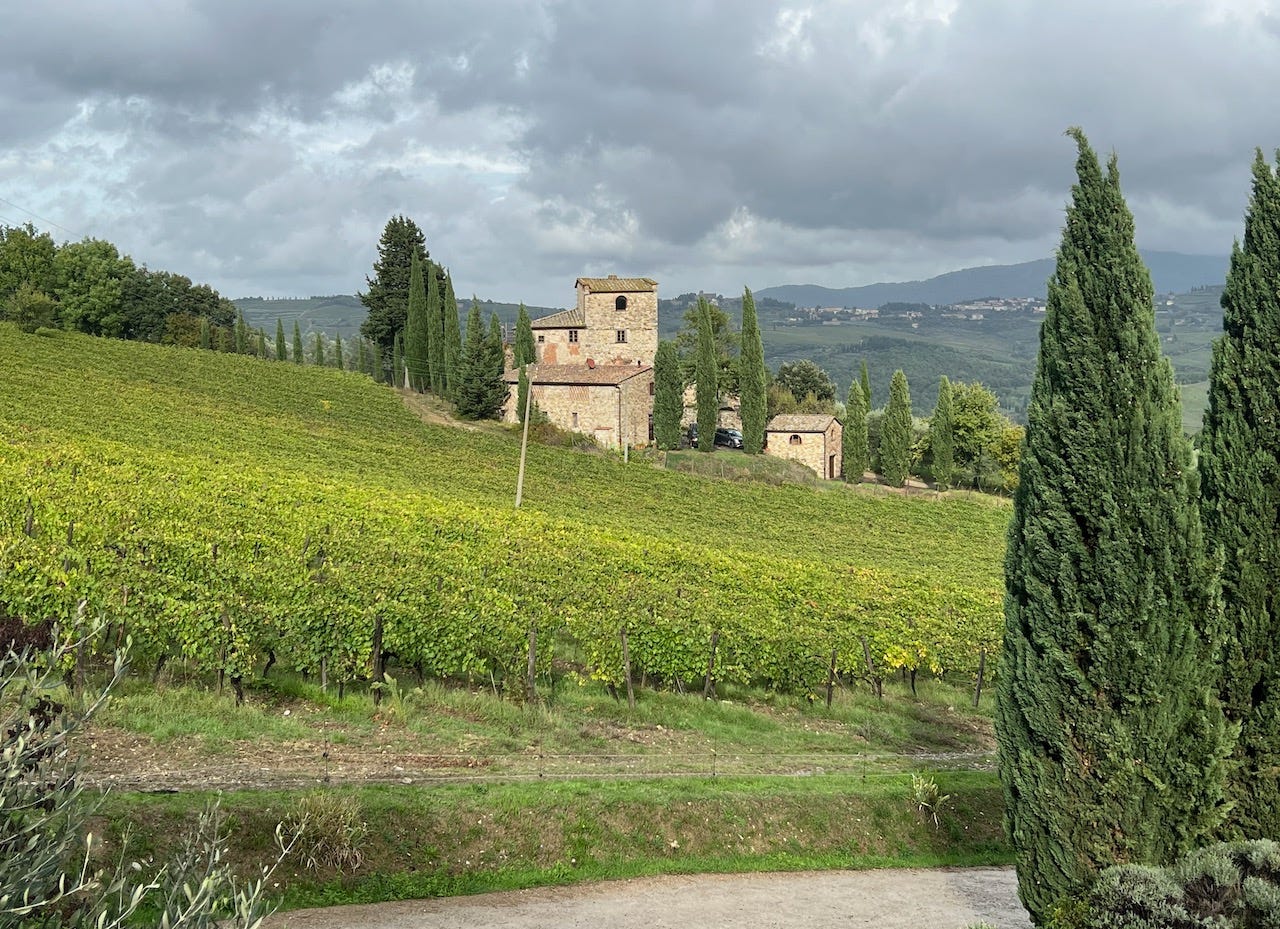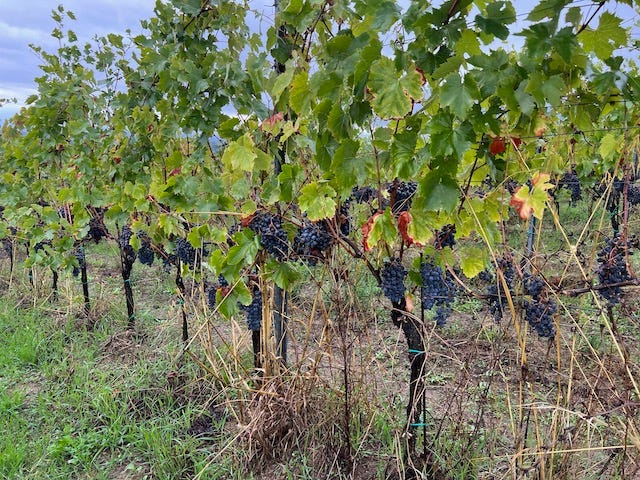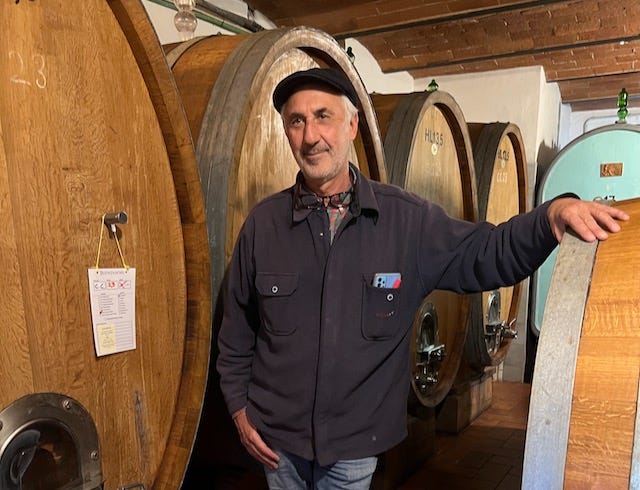Postcard from Tuscany.
How sybaritic does that sound?
Unfortunately it was one of the rare occasions when the hills weren’t bathed in golden light. It absolutely tipped down for two days of our visit as we tramped through the soggy vineyards. But Tuscany is beautiful in any weather.
If I’d said postcard from Chianti though would you have had the same reaction?
There’s so much incredibly cheap Chianti around (Lidl sells one for £5.29 I really wouldn’t recommend) it doesn’t have the reputation it deserves.
But there’s Chianti and Chianti.
The better wines come from the central Chianti Classico region which is situated between Florence and Siena but there are good wines from other sub-regions like Chianti Rufina too.
As with most wine regions the character of the wines depends on the soil, the altitude at which the vines are planted (higher = cooler which is good these days) and grape variety. Predominantly sangiovese but it can be combined with a small amount of other grape varieties.
There’s a good explanation here for those of you who want to do a deeper dive.
The main difference you’ll find is between younger fresher wines such as 2022s and ‘21s and more mature vintages such as 2019, 2018 and ’16 though good Chianti can last much longer. I tasted a great 2004 on my recent trip but after that they tend to lose their distinctively Tuscan character. (A controversial opinion I know. People like very old wines. My late husband for one. 😉)
Confusingly producers also make wines that are classified as IGT or Indicazione Geografica Tipica from grapes that are grown outside the officially recognised Classico area.
Known loosely as ‘Super Tuscans’ they generally include a higher proportion of international varieties like cabernet and merlot and tend to be fuller, riper and oakier than Chianti Classico. It’s often a question of the kind of barrels the wine is aged in too. Chianti classico is mainly aged in big casks which have less of an oak influence.
Am I getting too geeky? Here are some other slightly more fun facts and figures to trot out when you’re sharing a bottle with friends.






